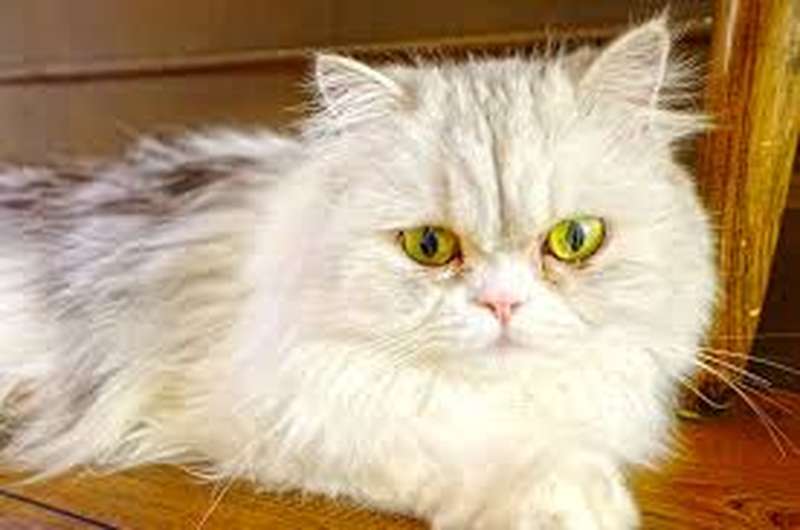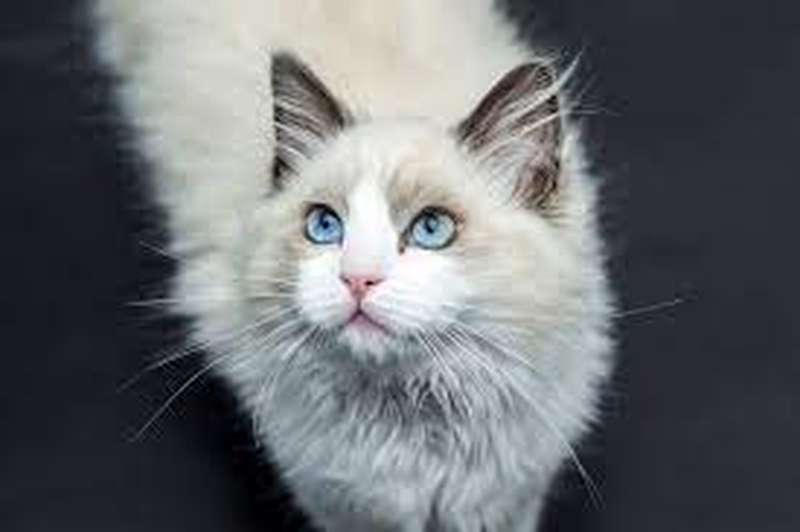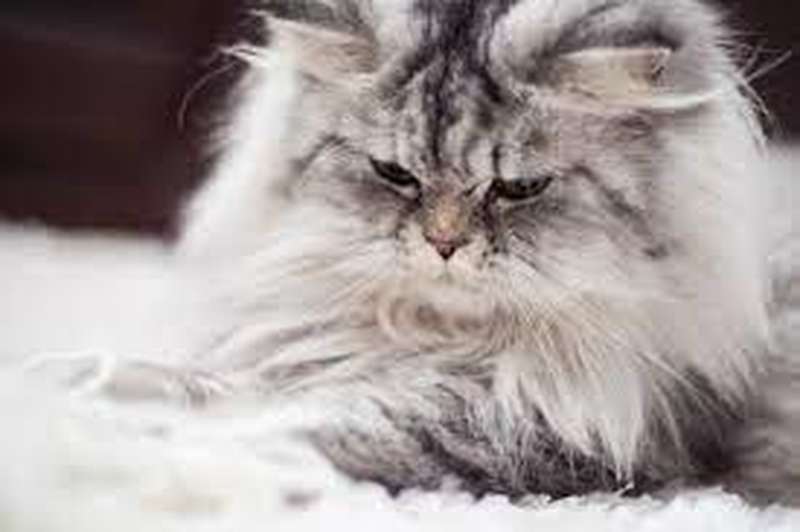Those who have seen a Persian cat can attest to their unparalleled elegance. The Persian cat breed is well-known for its long, soft fur and laid-back personalities, which make them delightful companions.
Why would a Persian cat make a good family pet?

The Persian cat is highly regarded in the U.S. for good reason. People often appreciate them for their open and un-cat-like personalities.
Instead of being mysterious troublemakers with glowing eyes that startle you in the middle of the night, they are friendly but demanding friend who enjoys being in your company constantly.
One of the greatest advantages of adding a Persian cat to your family is its calm and gentle temperament. To learn more about Persian Cats, read our article on Persian Cats.
The absence of territorial behavior.
Felines tend to be territorial, but they are not as territorial as they are lazy. They thoroughly enjoy meeting new people within the household and will undoubtedly make a wonderful addition to the family, especially when other children come over to visit.
They enjoy lying on the bed while the kids play and are even willing to participate if pets are involved.
Affectionate
This cat is very affectionate and enjoys receiving attention; the more, the better. The Persian cat should not be left unattended for long periods of time.
Without someone to constantly remind them of their beauty, they may begin to experience feelings of depression.

The presence of a Persian cat in the household makes it simpler to deal with their clinging and attention-seeking behavior because many family members can care about their demands.
The Persian cat always desires to be on your lap, regardless of your activities.
While you may thoroughly enjoy spending quality time cuddling with your cat, it is understandable that you may not always have the luxury of leisurely sitting around at the end of a busy day.
Having more members in the family results in this cuddler having more laps to take over.
Calm
The kitty is calm and quiet, so when it’s bedtime, you won’t find them meowing in the hallway, wondering why the fun has ended, and we must go to bed. Having a difficult little child to put to bed becomes much easier with this.
The Persian cat will become a comforting companion for your child during their sleep, providing them a sense of security and companionship.
You may need to clean the sheets more frequently, especially when you have kids. However, this is something that you would likely have to do regardless.
Willing to change
When you have kids, there are many individuals who come and go, such as friends, team members, and study buddies.
When raising children, it is inevitable that there will be significant changes as they grow. These changes not only affect the children themselves but also impact their living arrangements as they age.
The Persian cat will not be traumatized by this aspect; they will go along with any changes that occur as long as they receive the attention they feel they deserve.
9 Interesting Facts About Persian Cats
When deciding to purchase a Persian cat, there are numerous factors to consider. The following items are included:
Persian cats came from Persia. Maybe!
It’s unclear where the Persian cat actually came from. The Europeans became aware of long-haired cats when diplomats stationed in the Middle East brought them back to England and other European countries in the mid-1800s.

The Persian and Angora cat breeds, which took their names from the Turkish city of Ankara, respectively, and Iran, the birthplace of the ancient Persian Empire, are two of the most well-known cat breeds.
The long-haired Persian and Angora cats quickly became popular among Westerners due to their stunning beauty.
The Persian cat quickly became highly valued for its unique appearance and was given its name based on its believed place of origin.
They Have a Traditional Background
The breeding of purebred cats became increasingly popular alongside the establishment of the first kennel clubs in Europe during the mid-19th century.
The inaugural cat show took place at London’s Crystal Palace in 1871, marking a significant milestone in feline exhibitions.
Shortly thereafter, in approximately 1875, the first purebred Persians made their way to the United States.
The surge in cat breeding houses on both sides of the Atlantic during the early 20th century was primarily fueled by the immense popularity of the Persian cat, which is recognized as one of the earliest pedigreed cats.
It all begins with the hair.
The Persian cat is known for its long and thick coat, with each individual hair measuring 4-6 inches (10-15 centimeters) in length.
Its coat comes in a wide range of colors, spanning from pure white to vibrant combinations of tabby, tortoiseshell, patches, and other patterns.
Next, let’s consider the face. Persians have flat, open faces with tiny button noses, unlike Egyptian or Siamese cats that have long, sleek noses.
With their richly colored eyes and close-set nose, their eyes appear larger and more expressive. Their small, triangular mouths are accentuated by their cheeks’ curved, pansy-shaped contours.
Persians are characterized by their compact bodies, short, heavy-boned legs, and medium-length tails.
Persians are friendly but also lazy, like dogs.
Persians are renowned for more than just their attractive appearance. They are also remarkably friendly, especially for a cat.
According to Susan MacArthur, a Persian breeder with 20 years of experience at Pelaqita Persians, most cats display affection on their own terms.
Persians are often referred to as ‘dog cats’ due to their friendly and sociable nature towards people. They engage in behaviors that are not typical of regular cats.
Persian cats are known for their friendly nature and will eagerly run to the door to greet visitors. They can even respond when called by name, a behavior that is typically associated with dogs rather than cats.
Persians are often described as “talkative,” as they enjoy engaging in conversation with their owners through a melodious meow.
However, it is important to note that Persians are not excessively active animals.
According to MacArthur, they are considered the laziest breed in the world. They sleep for a total of 20 hours each day. Even the kittens don’t play much.
However, Persian fans are perfectly content with that. Persians have a laid-back and relaxed nature, which makes them less inclined to jump on counters or rummage through cabinets in search of food.
That coat isn’t combed by itself.
Although Persian cats are known for their laid-back nature, their fur requires significant maintenance. If you decide to get a long-haired breed, such as a Persian cat, be prepared to groom its hair on a daily basis.
According to MacArthur, Persians are prone to developing mats, which are clumps or knots of hair, due to their long and slightly greasy coat.
These mats tend to form rapidly in areas such as under their armpits, behind their hind legs, and behind their ears. If you fail to comb them daily, you will notice small mats forming within a week.
Short-haired housecats can groom themselves, but it is important to note that purebred Persians require regular bathing.
Breeders like MacArthur begin bathing their kittens at an early age to help them become accustomed to regular weekly baths.
One advantage of regularly combing and shampooing Persian cats is that it helps to reduce their shedding.
Breeders
Please remember that you might have to establish a working relationship with a breeder located in another state or even another country to acquire a Persian cat.
Shipping costs can often be quite costly. Certain breeders may desire to maintain a long-term connection with you.
Additionally, they might include specific provisions in a contract, such as prohibiting the surgical removal of your cat’s nails.
What do they need to eat?
Persian cats are known to have sensitive stomachs, which means they require high-quality food to accommodate their dietary needs.
Some specialty Persian cat food brands, such as Royal Canin, offer the specific nutrition required for your feline companion.
There are multiple reasons why your Persian cat requires high-quality food on their fur. Persians possess not only long hair but also a dense coat.
Hairballs can become a more significant issue for cats with certain characteristics compared to your average cat.
One way to reduce the occurrence of hairballs is by incorporating more oil into their diet.
The appearance of their faces also influences their dietary choices. The doll-faced variety of cats generally has fewer eating issues than our flat-faced friends, as the latter cannot eat in the same way as a typical cat.
They struggle to grasp food because of the shape of their mouth.
Persian cats may find eating small, x-shaped dry food pieces particularly challenging. Cats find it difficult to eat wet food, especially pate, because of their face shape.
The Persian lifestyle also necessitates specific dietary requirements. They are not the type of cat that sprints around the house.
This cat is relaxed and easygoing, similar to a lily in a field. However, this temperament can also contribute to weight issues as it may result in a lack of physical activity.
The combination of all these factors results in a cat that requires special attention when it comes to its dietary needs.
A bag of food priced at $14 from your local store will not be sufficient for their needs. Specialty items are often associated with higher costs.